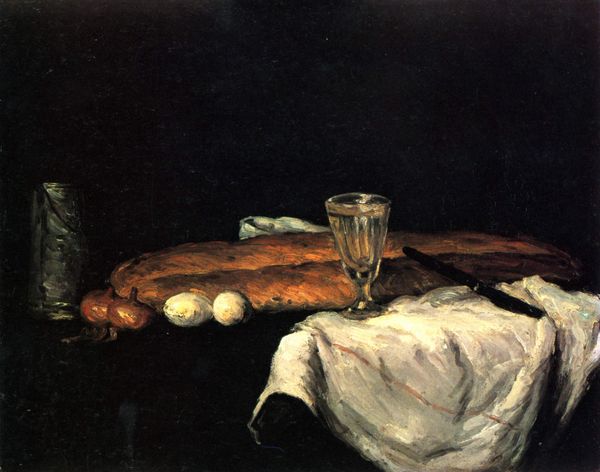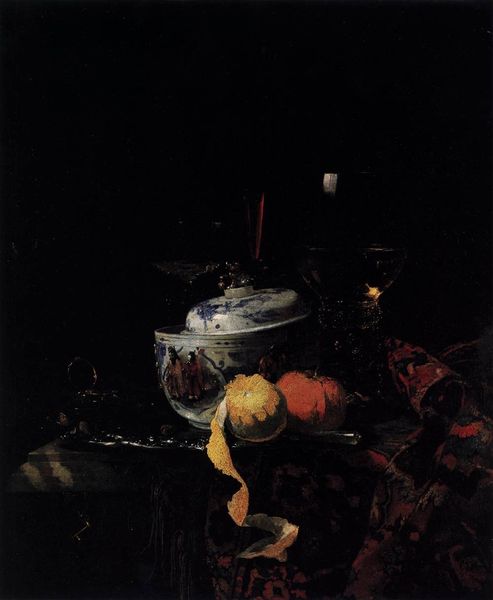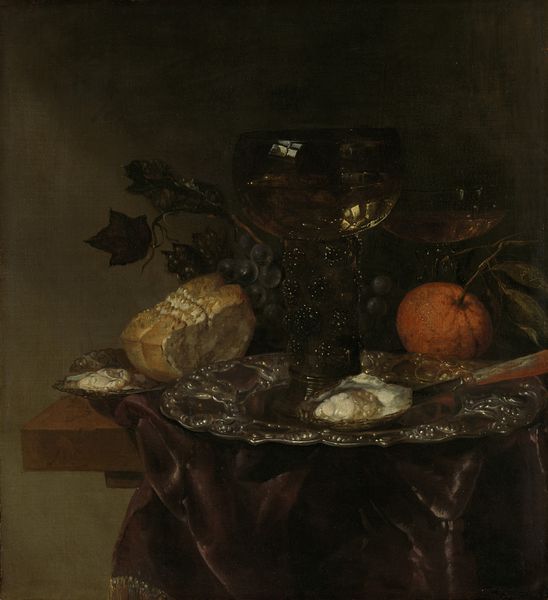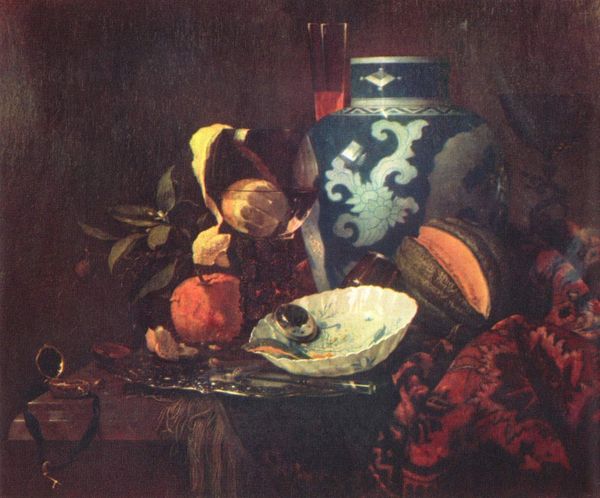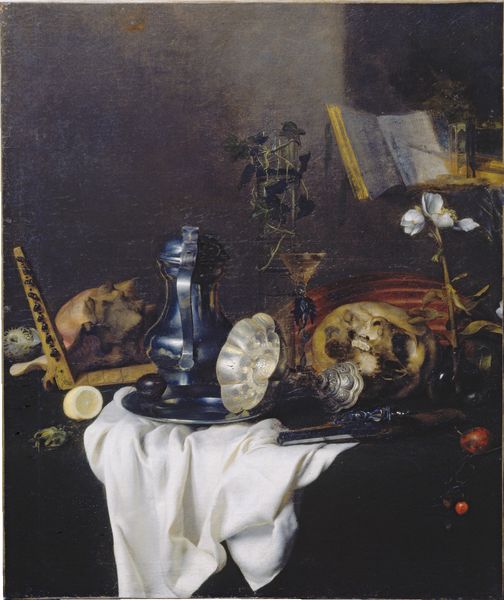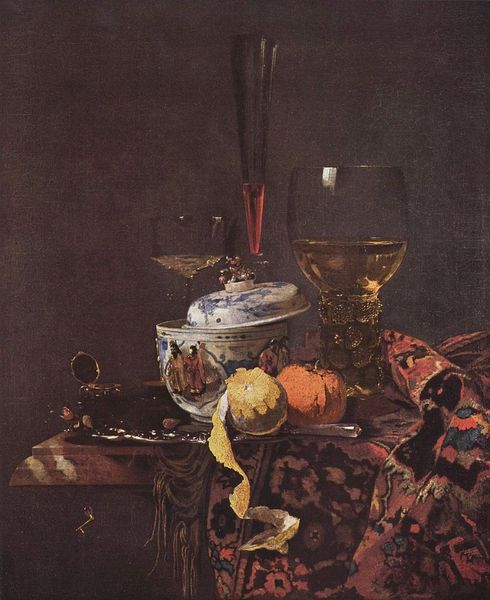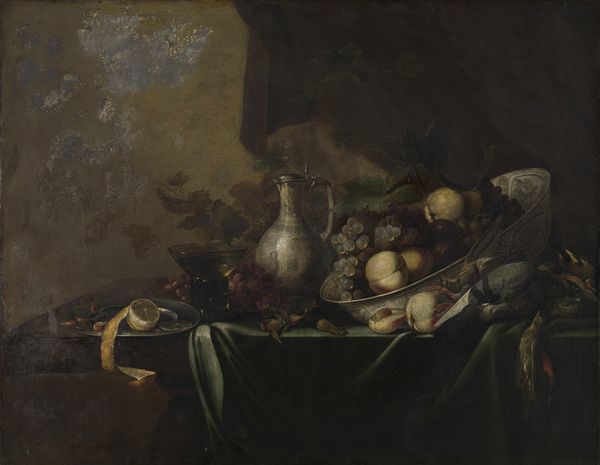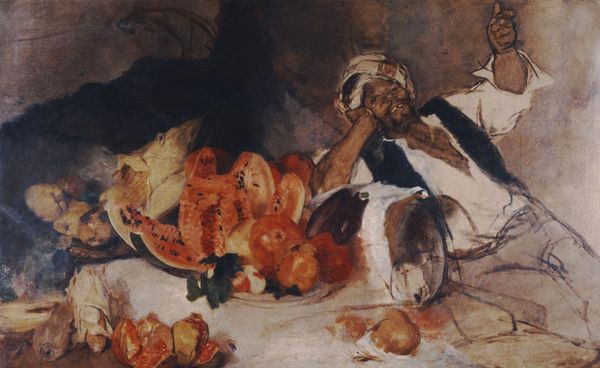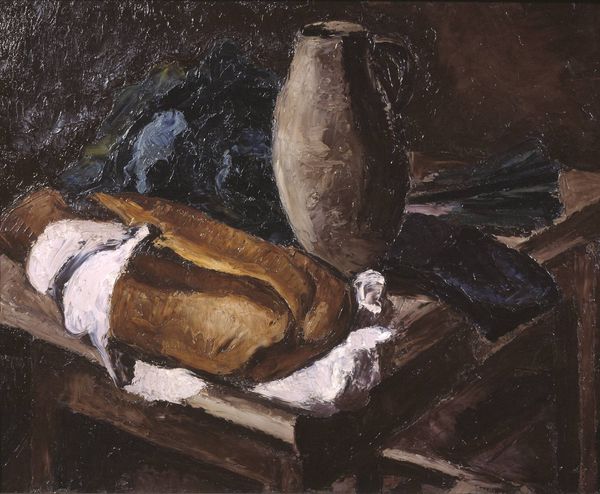
painting, oil-paint
#
still-life
#
baroque
#
dutch-golden-age
#
painting
#
oil-paint
#
oil painting
#
vanitas
Copyright: Public domain
Cornelis Norbertus Gysbrechts created this oil painting, titled "Nature morte aux poissons," around the mid-17th century. The composition is dominated by a dark background that throws a selection of carefully arranged objects into sharp relief, focusing attention on their texture and form. The rough scales of the fish, the soft texture of the bread, and the cold gleam of silverware play against each other, creating a rich sensory experience. The arrangement creates a strong horizontal emphasis, with the objects placed on what appears to be a draped table, giving the image a sense of order. Gysbrechts destabilizes the traditional still life by including decaying fish. The inclusion of these elements serves as a stark reminder of mortality, a vanitas motif. The contrast between the opulence of the silverware and the perishable nature of the fish offers a meditation on the transient nature of earthly pleasures. The work challenges fixed meanings of beauty and decay and forces us to confront uncomfortable truths. The horizontal emphasis functions as a stage for contemplating the interplay between life, death, and material existence. The painting then becomes more than a still life; it's a profound statement on the human condition.
Comments
No comments
Be the first to comment and join the conversation on the ultimate creative platform.
